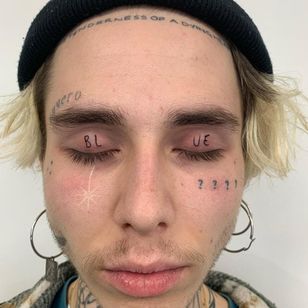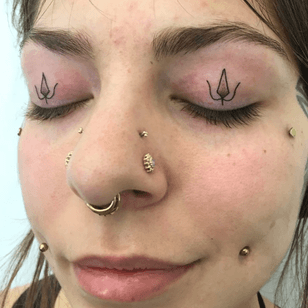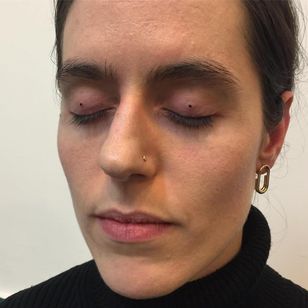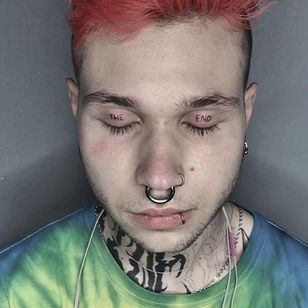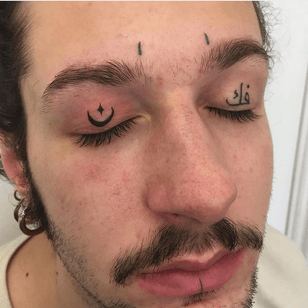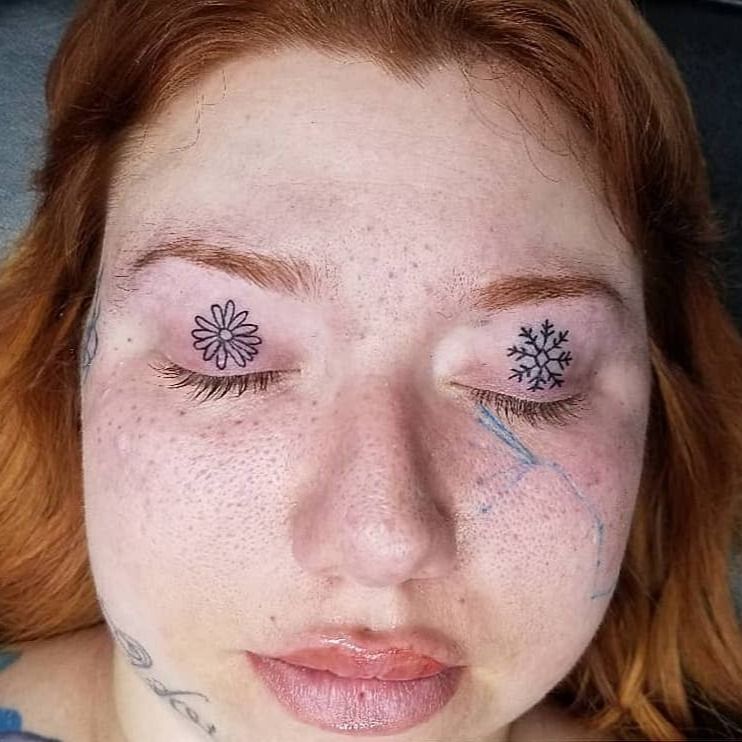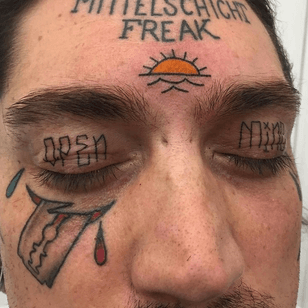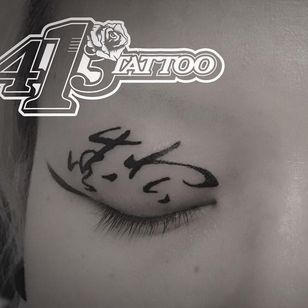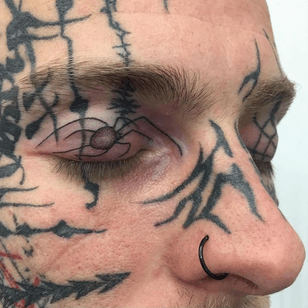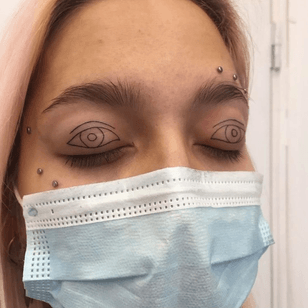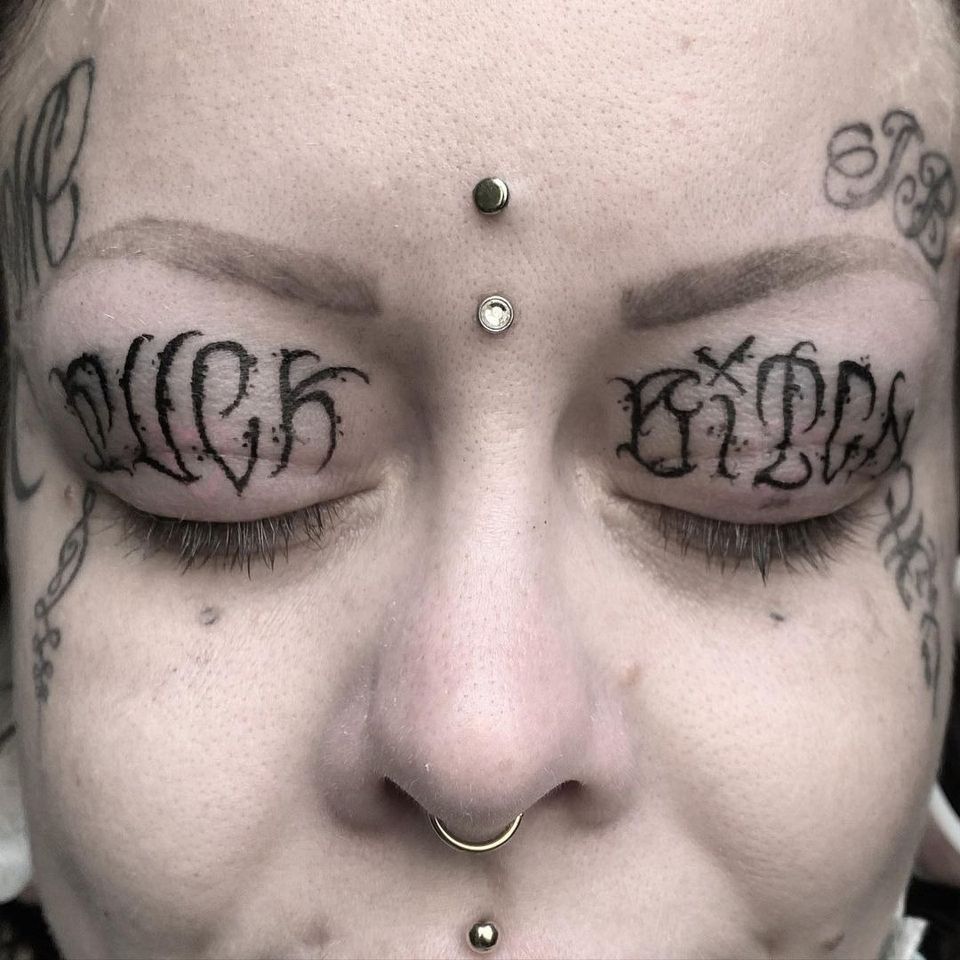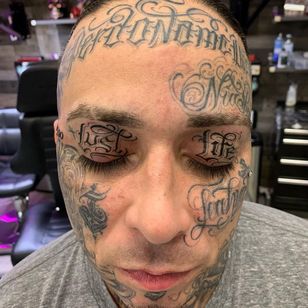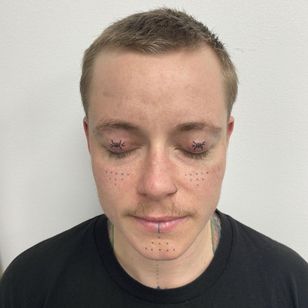Almost Everything You Need to Know About Eyelid Tattoos

Summary
The process, the pain, the risks, the recovery, and the removal of eyelid tattoos.
“…as the evil is from an eye, or from the glance of an eye, it is possible that black magic is thought to enter by the eye…perhaps painting [around the eye] is carried out in order to prevent this.” - Wilfred Dyson Hambly
Like so many of our body parts, the eyelids are meant to protect. Though small and seemingly insignificant, these semi-autonomic mechanisms are extraordinarily essential: they provide moisture to our eyes, defense against danger and debris, comfortable sleep, the hands-free ability to optically eschew the unsavory, and a plethora of other thankless favors. For a moment, imagine your life without them. In the time it took to conjure such a disturbing image, your corneas would have started dehydrating like a sun-scorched kitchen sponge. And how do we repay these tiny, indispensable skin-shields? We tattoo them, of course. Here’s almost everything you need to know about eyelid tattoos.
The Process of Getting Eyelid Tattoos
Despite the eyelids’ functional brilliance, they’re also incredibly delicate. In fact, eyelid skin is the thinnest on the body. This makes them a strange and susceptible match for modern tattoo machines and methods. If biceps were leather, eyelids would be parchment paper. Because of this, eyelid tattoos can’t be approached in the same manner as, say, a palm tattoo – the skin of the palm is the thickest on the body and thus requires enhanced pressure and deeper penetration. The eyelid, on the other hand, demands gentle finesse.
Brussels-based artist Indy Voet who typically handpokes his clients’ eyelid tattoos says, “I handpoke them, personally, because it helps me control my strength and delicateness while tattooing such fragile spots. Tattooing eyelids is, in a sense, pretty similar to other spots, but it’s also not the easiest to stretch and is very susceptible to blow-outs.”
Eyelid tattoo by jenna.tattoos #jennatattoos #eyelidtattoo #eyelid #linework #facetattoo #face
The Pain of Getting Eyelid Tattoos
While pain levels are mostly subjective, a scientific standpoint would suggest eyelids are amongst the most excruciating body parts to have tattooed. Three major cranial nerves control the eyelid and six regulate the eyeball. The trigeminal nerve, which supplies sensory stimulation to the eyelid, is responsible for the surge of pain present when the needle is buried into the diaphanous skin. And, as we know, directly beneath that very thin layer of skin lies the ever-vulnerable cornea – the most densely innervated tissue in the human body.
“No one has ever rated it as their most painful tattoo, “ Voet recalls. “Reactions do vary, though, from ‘I’m almost falling asleep’ to ‘this is not unbearable, but pretty unpleasant.’”
Below you’ll find a clip from the 2011 TV show NY Ink showing one man’s experience with eyelid tattoos. Spoiler: There are tears involved.
The Risks of Getting Eyelid Tattoos
As with anything in life, a certain level of risk is involved when getting tattooed. Tattoos differ, however, in that they involve desired danger; we don’t assess the possibilities and determine the reward greater than the risk. Instead, we decide the reward is great because of the risk. Eyelid tattoos raise the stakes as they jeopardize the functionality of a most major organ – one we rely on to enjoy the intended results of being tattooed. So, aside from having a needle accidentally rammed into your retina, what are the specific risks of eyelid tattoos?
Small studies revolved around permanent eyelid makeup have been conducted with results showing corneal erosion in participants who’d previously received tattooed eyeliner. However, these studies were observational rather than comprehensively evidential. In other words, they didn’t necessarily prove that eyelid tattoos in general were harmful, only that tattooed water lines – a beauty term, not a medical term – were consistent with harmful effects. Thus, it would seem the risk involved in getting eyelid tattoos solely correlates to the skill and experience level of the artist you choose. As with all tattoos: choose wisely.
From an aesthetic standpoint, Voet says, “the main risk is just blowing out the tattoo and leaving the client with a permanent bluish eyelid. Face tattoos of any sort are always nerve wracking.”
Eyelid tattoo by atrocedies #atrocedies #eyelidtattoo #eyelid #linework #facetattoo #face
The Recovery Process of Eyelid Tattoos
Additionally, eyelids are highly susceptible to infection as each eye contains about 75 oil glands. In severe cases, untreated eyelid infections from clogging and bacteria can result in vision loss. By nature, tattoos are both brutal and exposed; this makes aftercare of eyelid tattoos paramount. That means fragrance-free soaps, warm water, patting the area dry, and fragrance/alcohol-free moisturizers. No sunscreen, no makeup, no picking, pulling, or excessive touching. Voet recommends “keeping the eyelids clean and a little bit hydrated.”
Eyelid tattoo by fatkush_mgt #fatkuchmgt #eyelidtattoo #eyelid #linework #facetattoo #face
The Removal of Eyelid Tattoos
If you, like most people, aren’t a fan of having scary objects shoved into your eyes, then perhaps even more traumatizing than receiving eyelid tattoos is removing them by laser. Though the eyelids and the eyeball itself are numbed with ophthalmic numbing ointment before the treatment, interocular shields – tiny, stainless steel or plastic half-spheres with handles for insertion and removal – must still be placed under each eyelid, directly onto the eye to protect the cornea from the laser. Even so, because gentler lasers with minimal heat generation are utilized to remove tattoos from such a delicate region, there’s no guarantee the tattoo will be entirely obliterated.
Ultimately, every tattoo is a risk – some more trying and treacherous than others. For some folks, Armageddon will come before eyelid tattoos. For others, inked eyelids are wholly inevitable. But no matter what, there’s only one rule that rings universally true in the tattoo world: Choose wisely – the area, the emblem, and, most importantly, the artist.
Eyelid tattoo by Paul Racks #PaulRacks #eyelidtattoo #eyelid #linework #facetattoo #face

